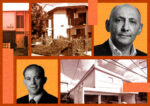Trending
The real estate doctor is in
Medical real estate specialist adapts to needs of health care clients

You can’t install a magnetic resonance imaging scanner in just any building. The heavy machines often require special structural supports, and also frequently need special shielding to prevent their effects from being felt throughout a building. Other medical equipment likewise can demand custom heating, ventilation and cooling or even a crane to get them installed.
That’s where Paul Wexler’s expertise comes in.
After decades catering to health care clients, the leader of the Wexler Healthcare Properties Team at the Corcoran Group can often identify which locations are appropriate on sight, saving the time, and money, that might otherwise be spent to hire engineers to vet a space.
“There are definitely certain physical requirements for these office spaces,” Wexler explained. “Medical equipment can’t go everywhere.”
Wexler was specializing in the real estate needs of doctors and other health care professionals well before he teamed up with Corcoran 15 years ago. Today, his team represents at least half a million square feet of New York City medical space at any given point, according to Corcoran data.
And Wexler still has relatively little competition in the city. Several international brokerages assign agents to specialize in medical real estate, including CBRE and Jones Lang LaSalle. However, CBRE mostly manages leases and development for health care providers, while Jones Lang LaSalle largely helps develop properties — in total, the firm managed the construction of 5.8 million square feet of medical space in the last two years.
Even rival brokerage Douglas Elliman doesn’t have a dedicated health care group. Instead, the company’s commercial team handles all office leases, and although certain agents specialize in multiple-niche markets, there isn’t a go-to person for medical real estate expertise.
Part of Wexler’s success reflects the stability of the medical real estate market in New York City and the general enthusiasm landlords have for medical tenants. Medical firms are less susceptible to changes in the economy, because health care is always in high demand in the city. Even better, landlords tend to favor physicians as tenants because they tend to be more stable. Wexler said physicians prefer longer leases, often for 10 years or more, since they typically invest so much to retrofit a space.
The needs of medical professionals have changed since Wexler and Corcoran linked up, so his group has had to adapt to a modernizing industry, or risk getting left behind.
The latest twist is coming from health care reform. As the Affordable Care Act kicks in and more New Yorkers have access to health insurance, doctors are anticipating an increase in patient volume. Many are enlarging the space they lease and launching satellite offices closer to patients’ homes in response.
“Everything used to revolve around the hospital campus,” Wexler noted. “Now, hospitals are still competitive, but realize off-campus settings like ambulatory and urgent care centers are more profitable. There are a lot of underserved areas medically, with patients having to travel much farther for care, and there is a movement now to be more accessible to patients.”
Also, high office rents coupled with a need for cost efficiency has doctors joining larger practices, translating to bigger, fewer deals.
“There’s a significant number of them sharing their costs, achieving efficiencies and pooling together,” Wexler said. “In the past, the typical medical office deal totaled 1,000 to 2,000 square feet. Now we’re selling spaces of more than 3,000 square feet, all the way up to 8,000 square feet in a single transaction.”
Despite the difficulties the trend presents, doctors who are spreading out to the fingertips of neighborhoods are some of his favorite clients to work with because of the opportunity to bring health care offices to areas of the city that need it. Right now, Wexler and his team are working on leasing a space repurposed by Billy Macklowe at 156 William Street in a part of Downtown that has limited access to hospitals.
“Those are the kind of projects that you like to get involved in,” Wexler said. “It’s kind of fun to create something new and in an area that has been underserved medically.”




